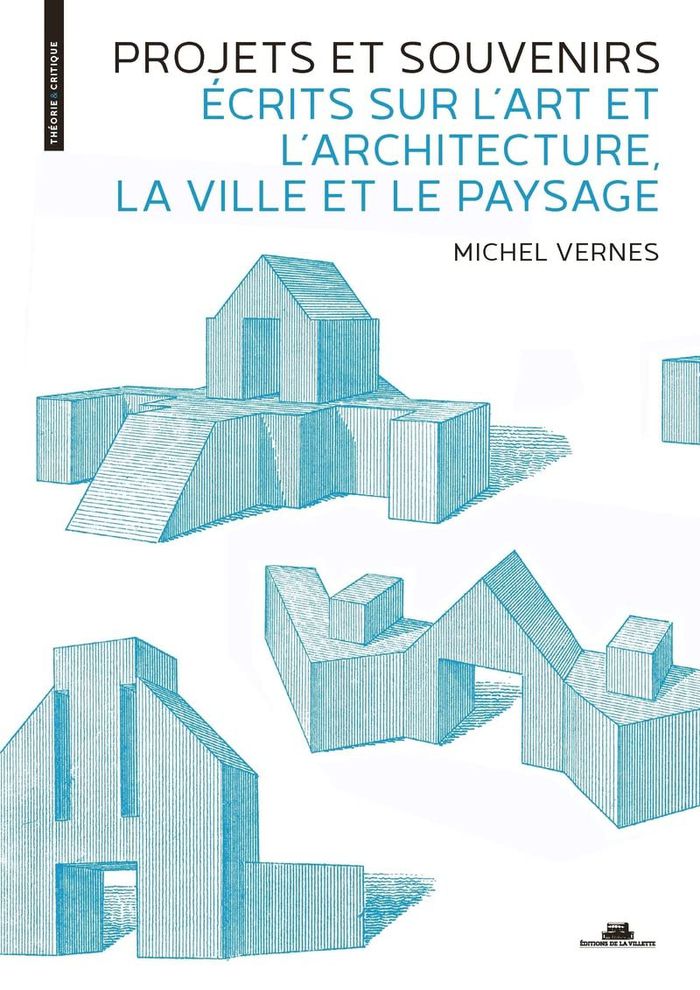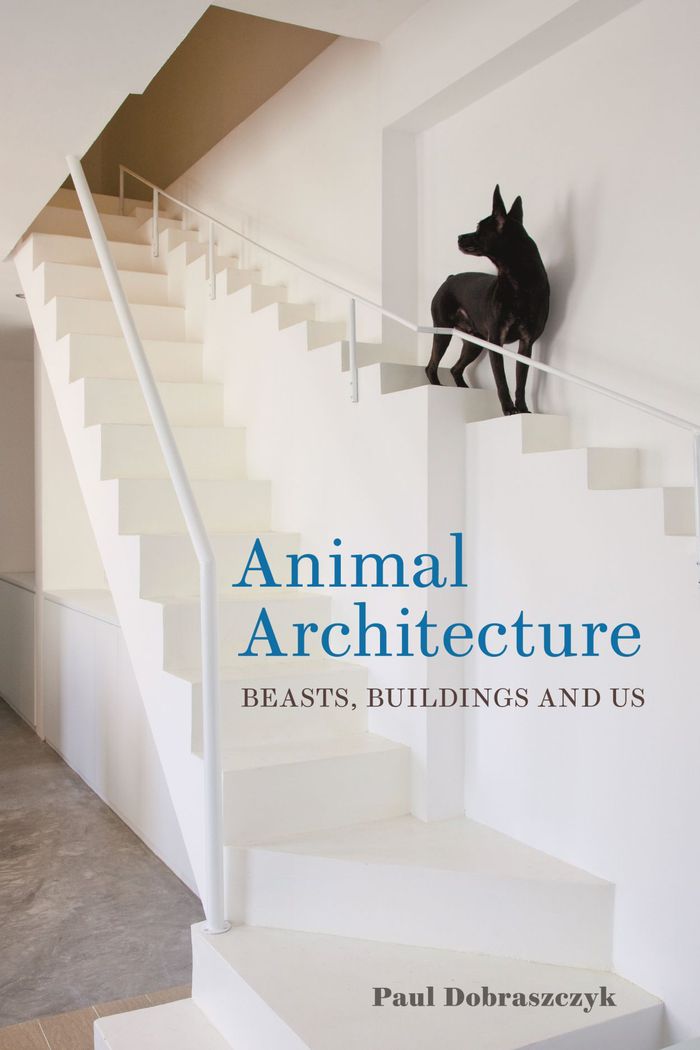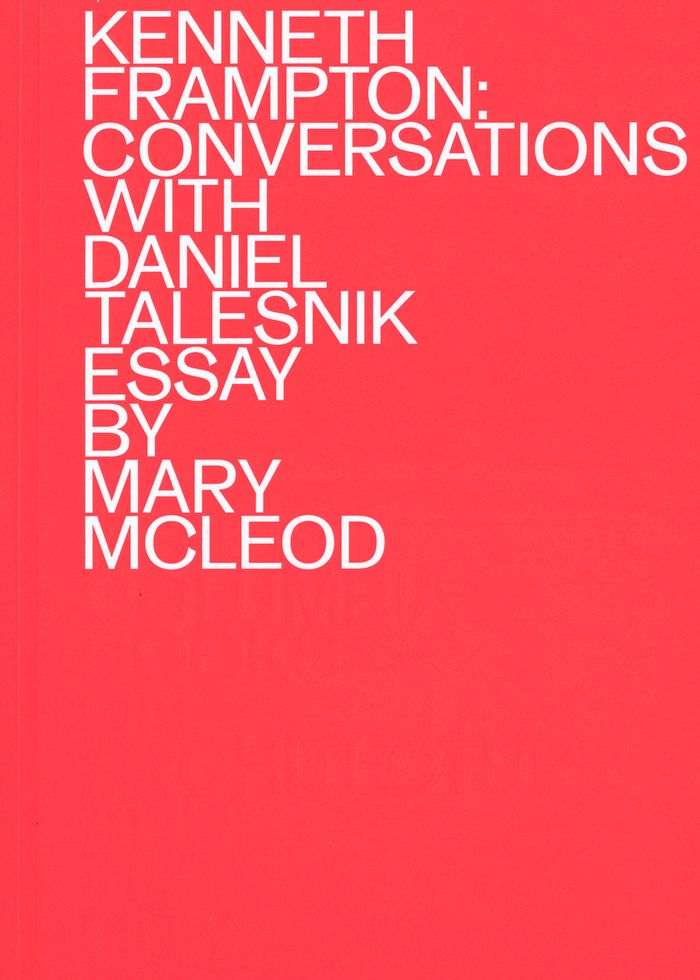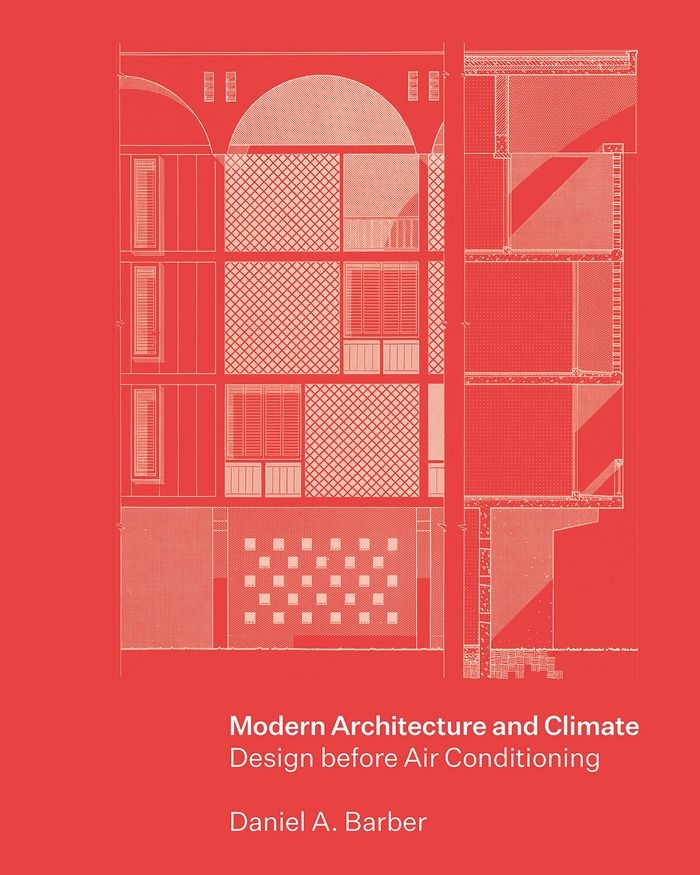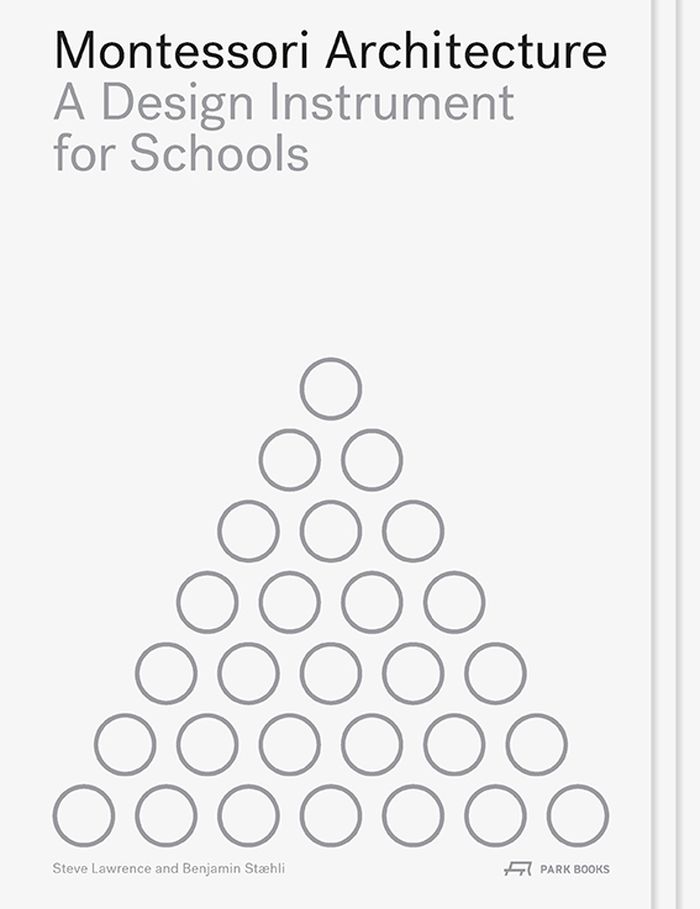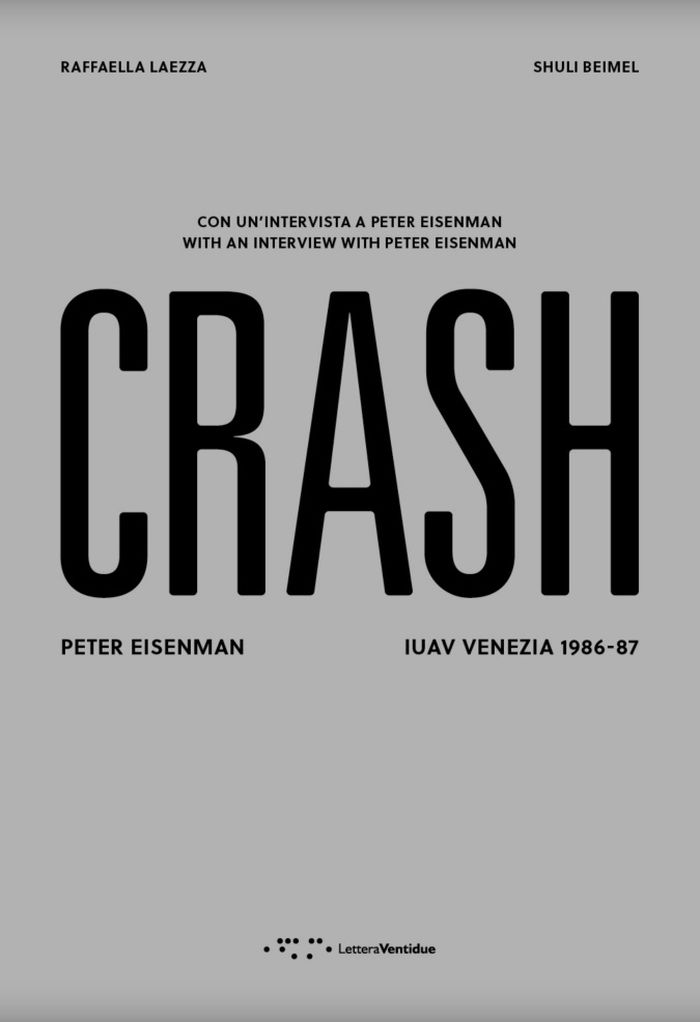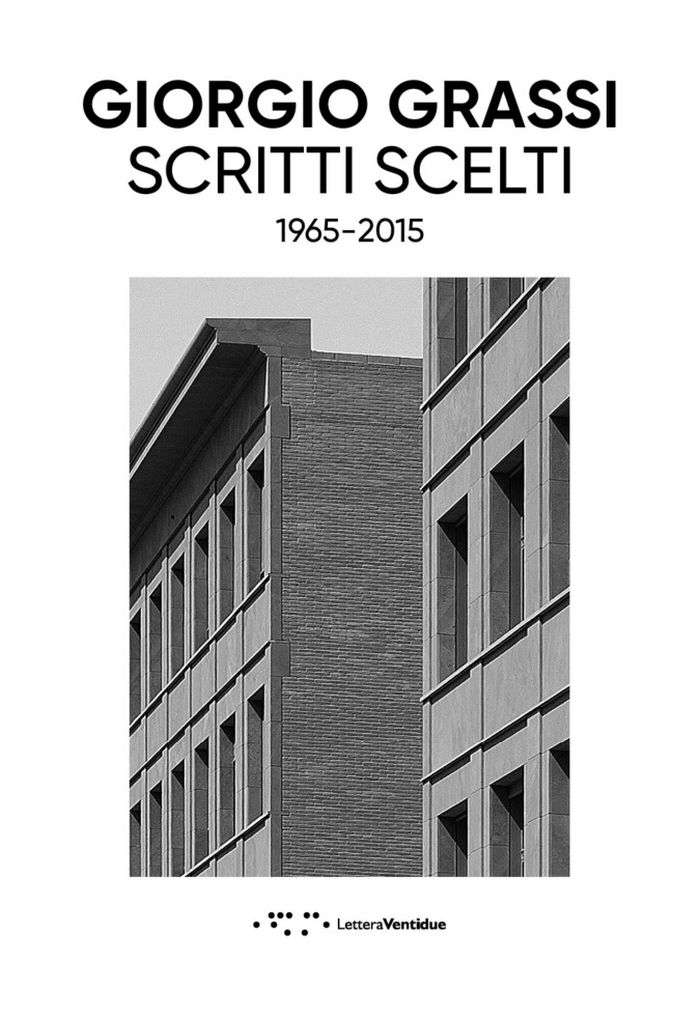$55.00
(available in store)
Summary:
In this collection of idiosyncratic lessons, architect and teacher Pier Paolo Tamburelli engages with the very foundations of architecture, proposing a series of new and open-ended perspectives on how we build the world. Developed for the ''Grundkurs'', or ''basic course'', at Vienna Technical University, Tamburelli’s lessons are presented through the annotated sketches(...)
Grundkurs: What is architecture about?
Actions:
Price:
$55.00
(available in store)
Summary:
In this collection of idiosyncratic lessons, architect and teacher Pier Paolo Tamburelli engages with the very foundations of architecture, proposing a series of new and open-ended perspectives on how we build the world. Developed for the ''Grundkurs'', or ''basic course'', at Vienna Technical University, Tamburelli’s lessons are presented through the annotated sketches that form the basis of his lectures – variously rough and precise, sarcastic and sincere, and always uniquely expressive. This volume is a rich visual sourcebook of architectural ideas that form an accessible and discursive introduction to the discipline – one which pauses on the road to grand theories to learn from the intuitive processes of notetaking, drawing, and association. Tamburelli’s lessons are based around a series of dialectic couples, including Roof/Wall, Shelter/Memory, and Language/Action. The pairs are experimental and often provocative, offering a framework to be used to climb in the direction of architecture. Tamburelli trusts in the capacity of images to suspend the restraints of more rigorous theoretical approaches, embraces the flexible wisdom of the note, and relishes the intrigue of the cryptic messages we leave for ourselves. Reproduced here in their entirety, these eight lessons offer countless routes towards, through, and around architecture, providing newcomers and experts alike with an intimate and refreshing encounter with a millennia-old discipline.
Architectural Theory
$75.95
(available to order)
Summary:
Convaincu que l'écriture poétique est plus à même de restituer un fait architectural qu'une photographie, Michel Vernes fut un véritable écrivain d'architecture. Exceptionnelle par sa richesse, son érudition et sa qualité littéraire, son oeuvre, composée essentiellement d'articles et d'essais, est longtemps restée dispersée. Ce recueil réunit une sélection de trente-deux(...)
Project et souvenirs : Écrits sur l'art et l'architecture, la ville et le paysage
Actions:
Price:
$75.95
(available to order)
Summary:
Convaincu que l'écriture poétique est plus à même de restituer un fait architectural qu'une photographie, Michel Vernes fut un véritable écrivain d'architecture. Exceptionnelle par sa richesse, son érudition et sa qualité littéraire, son oeuvre, composée essentiellement d'articles et d'essais, est longtemps restée dispersée. Ce recueil réunit une sélection de trente-deux textes qui offrent enfin une vue d'ensemble sur son travail original et exigeant, éclectique et buissonnier. Convaincu que l'écriture poétique est plus à même de restituer un fait architectural qu'une photographie, Michel Vernes fut un véritable écrivain d'architecture. Exceptionnelle par sa richesse, son érudition et sa qualité littéraire, son oeuvre, composée essentiellement d'articles et d'essais, est longtemps restée dispersée. Ce recueil réunit une sélection de trente-deux textes qui offrent enfin une vue d'ensemble sur son travail original et exigeant, éclectique et buissonnier.
Architectural Theory
$50.00
(available to order)
Summary:
A spider spinning its web in a dark corner. Wasps building a nest under a roof. There’s hardly any part of the built environment that can’t be inhabited by nonhumans, and yet we are extremely selective about which animals we keep in or out. This book imagines new ways of thinking about architecture and the more-than-human and asks how we might design with animals and the(...)
Animal architecture: Beasts, buildings and us
Actions:
Price:
$50.00
(available to order)
Summary:
A spider spinning its web in a dark corner. Wasps building a nest under a roof. There’s hardly any part of the built environment that can’t be inhabited by nonhumans, and yet we are extremely selective about which animals we keep in or out. This book imagines new ways of thinking about architecture and the more-than-human and asks how we might design with animals and the other lives that share our spaces in mind. This volume is a provocative exploration of how to think about building in a world where humans and other animals are already entangled, whether we acknowledge it or not.
Architectural Theory
$28.00
(available to order)
Summary:
This book presents seven interviews with the architectural historian reflecting on the long arc of his rich and influential career in the discipline. Spanning Frampton’s early years as an architecture student at the Guildford School of Art to his nearly fifty years as a professor at Columbia University’s Graduate School of Architecture, Planning, and Preservation, the(...)
Kenneth Frampton: Conversations with Daniel Talesnik
Actions:
Price:
$28.00
(available to order)
Summary:
This book presents seven interviews with the architectural historian reflecting on the long arc of his rich and influential career in the discipline. Spanning Frampton’s early years as an architecture student at the Guildford School of Art to his nearly fifty years as a professor at Columbia University’s Graduate School of Architecture, Planning, and Preservation, the interviews trace not only the development and implications of his work but also the cultural, political, and discursive terrain surrounding it. Here Frampton outlines the formation of his seminal ideas of "critical regionalism" and "tectonic culture," and also ruminates on how he understands his own role as a writer on architecture. The book includes an essay by Mary McLeod, which takes stock of Frampton’s "criticality" and his enduring impact on architectural practice. As a whole, this volume is as much a portrait of a thinker as a record of the books, buildings, and ideas that have inspired such profound architectural thought.
Architectural Theory
$68.00
(available to order)
Summary:
This volume explores how leading architects of the twentieth century incorporated climate-mediating strategies into their designs, and shows how regional approaches to climate adaptability were essential to the development of modern architecture. Focusing on the period surrounding World War II—before fossil-fuel powered air-conditioning became widely available—Daniel(...)
Modern architecture and climate: Design before air conditioning
Actions:
Price:
$68.00
(available to order)
Summary:
This volume explores how leading architects of the twentieth century incorporated climate-mediating strategies into their designs, and shows how regional approaches to climate adaptability were essential to the development of modern architecture. Focusing on the period surrounding World War II—before fossil-fuel powered air-conditioning became widely available—Daniel Barber brings to light a vibrant and dynamic architectural discussion involving design, materials, and shading systems as means of interior climate control. He looks at projects by well-known architects such as Richard Neutra, Le Corbusier, Lúcio Costa, Mies van der Rohe, and Skidmore, Owings, and Merrill, and the work of climate-focused architects such as MMM Roberto, Olgyay and Olgyay, and Cliff May. Drawing on the editorial projects of James Marston Fitch, Elizabeth Gordon, and others, he demonstrates how images and diagrams produced by architects helped conceptualize climate knowledge, alongside the work of meteorologists, physicists, engineers, and social scientists. Barber describes how this novel type of environmental media catalyzed new ways of thinking about climate and architectural design.
Architectural Theory
$54.95
(available to order)
Summary:
The cycle of production and consumption, artificially accelerated by advertising and marketing, has characterised our society for decades. This cycle has recently also taken hold of the architecture of the city, leading to a waste that is both economically and ecologically unacceptable. The destruction of buildings that are not actually obsolete is just as questionable as(...)
Radical normal: Propositions for the architecture of the city
Actions:
Price:
$54.95
(available to order)
Summary:
The cycle of production and consumption, artificially accelerated by advertising and marketing, has characterised our society for decades. This cycle has recently also taken hold of the architecture of the city, leading to a waste that is both economically and ecologically unacceptable. The destruction of buildings that are not actually obsolete is just as questionable as the production of extravagant architectures for which there is no real need. This book is a protest against the merciless globalisation of the city and its dissolution into faceless, inhospitable peripheries. At the same time, it puts forward alternative strategies of urban design to counteract such globalisation and dissolution. It formulates a different approach to urbanism, one which views the city not as a carnivalesque display of vanities but as a sophisticated spatial construction that lays down the conditions for a productive, sociable, serene, and happy life.
Architectural Theory
$70.00
(available to order)
Summary:
Montessori schools became trendsetting educational institutions early on, and their concept is strongly reflected in their architecture and equipment. This is the first book that comprehensively addresses architectural design, construction, and the use of materials in and the furnishing of educational spaces according to Montessori’s ideas. The book’s first part explores(...)
Montessori architecture: A design instrument for schools
Actions:
Price:
$70.00
(available to order)
Summary:
Montessori schools became trendsetting educational institutions early on, and their concept is strongly reflected in their architecture and equipment. This is the first book that comprehensively addresses architectural design, construction, and the use of materials in and the furnishing of educational spaces according to Montessori’s ideas. The book’s first part explores spatial and design principles that make up good kindergarten and school buildings. In the second part, nine case studies are featured in detail through photographs, plans, and concise texts. These examples are located in Europe (the Netherlands, Belgium, Great Britain) as well as in tropical countries (Burkina Faso, Tanzania, Bangladesh, Sri Lanka). Thus, this highly illustrative volume offers practical advice and a wealth of information that is of utmost importance for the design of school buildings in general.
Architectural Theory
$36.95
(available to order)
Summary:
Peter Eisenman, one of the greatest contemporary architects, taught in Italy in 1986 at the IUAV University of Venice. This book, edited by his students Raffaella Laezza and Shuli Beimel aims to be a lucid witness of a period of great cultural change in international architectural design that found at IUAV, in the academic year 1986-87, in Peter Eisenman’s Architectural(...)
Crash: Peter Eisenman. Iuav Venezia 1986-87
Actions:
Price:
$36.95
(available to order)
Summary:
Peter Eisenman, one of the greatest contemporary architects, taught in Italy in 1986 at the IUAV University of Venice. This book, edited by his students Raffaella Laezza and Shuli Beimel aims to be a lucid witness of a period of great cultural change in international architectural design that found at IUAV, in the academic year 1986-87, in Peter Eisenman’s Architectural Composition III course one of its most significant moments. Twenty-five students, selected by the American professor, were introduced to new thinking and a new design method that confronted the concepts of ''time / site / space'' in a completely innovative way. This caused in each young student a real ''crash''. But wasn’t such a ''crash'' already an unstoppable, international wave? The book invites us into the thinking of the American architect who states in the interview, ''I have always loved Italy, the culture, the food, the people, so making this book was very important to me.''
Architectural Theory
$60.00
(available to order)
Summary:
This book brings together eight of the most interesting and significant essays by the unequalled historian Robin Evans, author of The Projective Cast. Written over a period of 20 years from 1970, shortly after his graduation from the Architectural Association (AA), to 1990, the essays cover a wide range of architectural concerns: domestic space, society’s involvement with(...)
Translations from drawing to building and other essays, re-edition
Actions:
Price:
$60.00
(available to order)
Summary:
This book brings together eight of the most interesting and significant essays by the unequalled historian Robin Evans, author of The Projective Cast. Written over a period of 20 years from 1970, shortly after his graduation from the Architectural Association (AA), to 1990, the essays cover a wide range of architectural concerns: domestic space, society’s involvement with building types, aspects of geometry, modes of projection and drawing as a process for generating ideas. The book includes ‘Mies van der Rohe’s Paradoxical Symmetries’ and other essays first published in AA Files. Evans’s writings are supported by a new introduction and an annotated bibliography by Richard Difford. This AA Documents publication is a re-edition of the 1997 essay collection originally published by AA Publications.
Architectural Theory
$75.00
(available to order)
Summary:
Per Giorgio Grassi la riflessione teorica e l’attività progettuale, pur legate da vincoli di stretta dipendenza e di reciproca influenza, possiedono entrambe un’autonomia propria e un elevato grado di generalità. Destinati a studenti e giovani architetti – come Grassi stesso ha più volte sottolineato – i suoi scritti affrontano diversi temi di architettura, mantenendosi(...)
Giorgio Grassi : Scritti scelti 1965-2015
Actions:
Price:
$75.00
(available to order)
Summary:
Per Giorgio Grassi la riflessione teorica e l’attività progettuale, pur legate da vincoli di stretta dipendenza e di reciproca influenza, possiedono entrambe un’autonomia propria e un elevato grado di generalità. Destinati a studenti e giovani architetti – come Grassi stesso ha più volte sottolineato – i suoi scritti affrontano diversi temi di architettura, mantenendosi sempre rigorosamente all’interno della disciplina.
Architectural Theory

